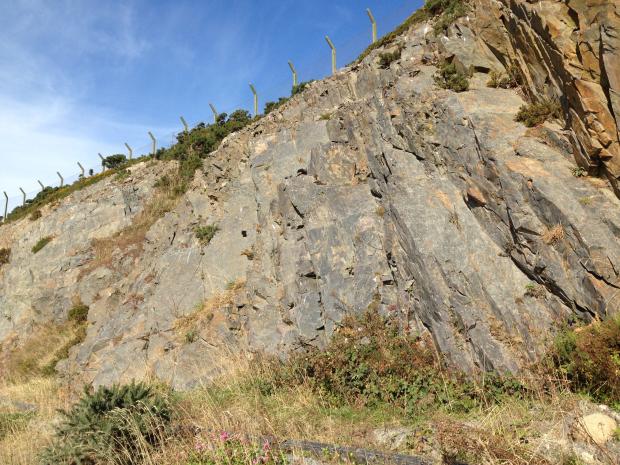
Aughnahon Quarry is a special place because of its earth science interest. The area provides access to exposures of a granite-like rock called granodiorite and Silurian sedimentary rocks that together with a number of other sites describe the Newry Igneous Complex.
The granodiorite was formed some 410 million years ago. This is an igneous rock type, that is, it was injected as magma (molten rock) into pre-existing older rocks – Silurian sedimentary rocks. These older rocks are known as ‘host’ rocks. The magma then cooled slowly eventually forming huge masses of solid rock deep beneath the surface. Subsequent erosion has now exposed parts of these enormous rock units.
Each of these igneous rock units is referred to as a pluton. Three of these are present which collectively make up the Newry Igneous Complex. The complex extends over an area of about 45km2 from Slieve Croob in the northeast to Forkhill in south Armagh.
The rocks at Aughnagon Quarry form part of the central pluton and are of great importance as they display the complex relationships between the granodiorite and other igneous rock types, and the Silurian sedimentary ‘host’ rock.
The older Silurian sedimentary rocks that formed in this ocean are exposed at Aughnagon Quarry. These sedimentary rocks have been altered by the heat of the igneous intrusion; a process known as contact metamorphism. This has caused the rocks to change composition resulting in a different appearance from the rest of the Silurian sedimentary rocks that are widespread across Co. Down. In some cases, the intrusion of the granodiorite has caused the ‘host’ rock to mobilise and this can be seen as contorted or twisted layers.
At Aughnagon Quarry the minerals that make up the granodiorite are not aligned. Alignment forms stripes that are typically parallel to the contact between the granodiorite and older host rocks. They form as the hot magma is pushed against the host rock at the edge of the pluton.
The absence of alignment is unusual at the location as it is at the edge of the pluton. This feature is common in the other two plutons that make up the Newry Igneous complex so it is assumed that the mechanism for the formation of the central pluton is different to the others.
Related articles
- ASSI Guidance for Public Bodies/Competent Authorities
- Coastal Areas of Special Scientific Interest
- Conservation Management Plans (CMPs)
- European Marine Sites - Marine Special Areas of Conservation and Special Protection Areas
- Introduction to Conservation Management Plans (CMPs) for Northern Ireland’s Special Areas of Conservation
- Marine Conservation Zones
- Marine Protected Areas
- Marine Ramsar sites
- Portrush Coastal Zone
- Special Areas of Conservation
- Special Areas of Conservation for Harbour porpoise
- Special Protection Areas
